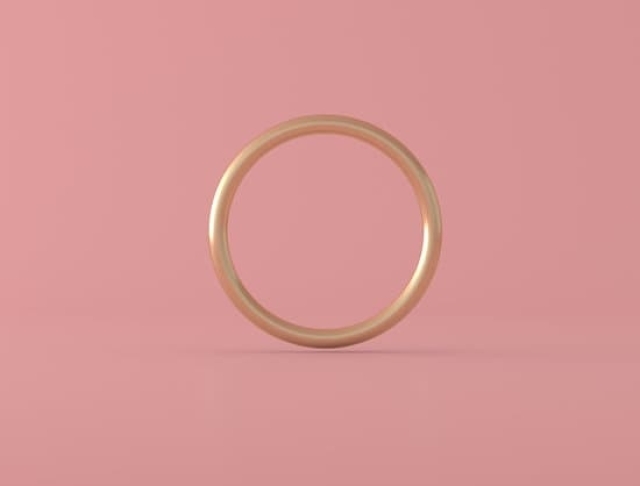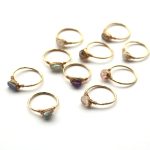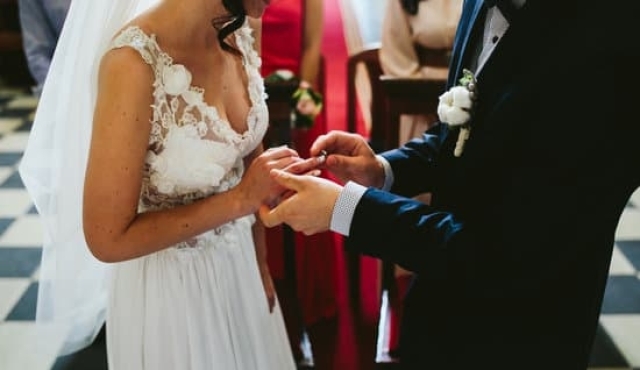Costume jewelry, or “fashion jewelry” is an accessory that adds spark and flavor to any outfit. With so many intricate designs available to suit any style, most costume jewelry is made from lightweight materials such as plastic, finished metals and glass.
However, it is prone to damage with everyday use due to its delicate composition. Learning how to repair costume jewelry can be a challenge for those with limited experience handling handy work but with some practice, it is possible to restore pieces back to their former glory.
Advantages of Repairing Costume Jewelry
Repairing costume jewelry provides an array of advantages including cost savings and environmental friendliness. By investing time and care in repairing broken or damaged pieces instead of purchasing them on impulse, one can save money while being resourceful at the same time.
Additionally, repairing a broken piece gives some level of satisfaction as noticing the results of small efforts go a long way in boosting morale. Lastly, repairs can provide valuable insight into areas that need improvement on craftsmanship and can make upskilling easier by allowing room for error when making mistakes.
Disadvantages of Repairing Costume Jewelry
Unfortunately, there are a few drawbacks when attempting DIYprojects such as this one. The first hindrance is difficulty in obtaining the right materials for certain jobs – although basic supplies such as glue and pliers may be common across hardware stores, finding specialty parts for specific tasks might prove frustrating even with access to online shops – especially if parts need replacing soon after obtaining them initially.
Secondly , depending on the extent of damage done this task may take quite some time before completion. Lastly the possibility of ruining a piece due to wrong upkeep methods exists meaning that extra caution needs taken when restoring old items.
Conclusion: Summing Up Repairing Costume Jewelry
To conclude , repairing costume jewelry may sound intimidating for first – timers but taking slow steps breaking down tasks makes it manageable with minimal risk. More interestingly , not only will restoration become easier but also refreshing once good habits are well – established.
Differences between Repairs with Glue and Soldering
Mending costume jewelry requires some technical know-how as different types of repairs will depend on the type and severity of the damage. In particular, when it comes to repairing costume jewelry, there are two main methods used: glue and soldering.
Glue is typically reserved for simpler and less severe repairs, such as reattaching a small stone which has come loose, or mending broken strands along the side of earrings. Glue is also more versatile in terms of application than soldering and can be applied quickly to complete what is usually considered minor repairs on costume jewelry.
While the glue should produce a strong bond and fix the issue, it’s common for costume jewelry pieces to require regular touchups once they have been glued together in order for them to look aesthetically presentable again.
Soldering represents a more permanent solution for mending costume jewelry pieces and is used for more serious damages which require exact precision in order to prevent further weakening or tearing at the given point of damage. This involves using an open flame or welding tool which produces extreme temperatures enabling metal to melt together and create an even stronger practice that should last permanently.
This can be useful when dealing with missing clasps that need reconnection along necklace chains or rings with settings where stones have become cracked or broken off at their base structure. Unlike gluing pieces back together, soldering provides a neat finish that not only looks much better but also dissipates any doubts around how secure it will remain once fixed, giving you peace of mind close.
Types of Costume Jewelry Repairs
Costume jewelry repairs generally involve either cleaning, repairing a broken clasp, replacing missing parts or refinishing enamel pieces. As costume jewelry is often made of light metals and with synthetic stones and beads, the process of repairing may differ from that of fine jewelry. Prolonged wear and tear or improper care can lead to costumes jewelry repairs as well.
When it comes to cleaning costume jewelry, an ultrasonic cleaner is usually recommended for removing dirt and grime from between stones, crevices and refining delicate pieces. This machine vibrates water at a high frequency which cleans any embedded dirt while being gentle on the material used in making costume jewelry.
However, items such as pearls should not be kept in this device as the vibration might damage them. In addition to this, one can use a soft brush with soapy water along with polishing cloths to remove tarnish that builds up over time especially on silver based costume jewelry pieces.
Many times it’s possible to repair a broken clasp if it has been manufactured using same metal component as that of the piece itself such as jump rings holding together both ends of the chain or single wire connecting small screws securing the two sides together when clasps either break or become loose.
In case extra parts are required for replacement, these components can be purchase from craft supply stores although it’s important to opt for materials of same quality or higher so your finished product looks genuine like before.
Refinishing certain metallic components and re-enameling aged ones is also often recommended if your costume jewelry starts looking dull after prolonged wear or chemical exposure from body oils, sweat and cosmetics resulting in discoloration of its surface.
Refinishing involves sandblasting for removing all existing layers off followed by application of new lacquer coating however avoid this method unless you have prior experience in enamel work as it’s difficult to recreate intricate designs through amateur DIY attempts without causing further damage to any decorative motifs present on it.
Gathering Necessary Supplies and Tools
If you want to repair costume jewelry, the first thing you will need to do is gather the necessary supplies and tools. You may need to buy tweezers, pliers, razor blades, polishing cloths, wire cutters and epoxy adhesive from a craft store. If your jewelry is made up of multiple pieces, it will be helpful to have spare parts such as beads or chain links that are compatible with the pieces of your jewelry.
Having additional rhinestones and other decorative pieces around can also make it easier to repair any missing sections of your jewelry. Once you have all these supplies on hand, you can begin repairing your costume Jewelry.
Repairing Missing Parts
The next step in repairing costume Jewelry is to identify any missing pieces or sections that require replacement or repairs. Depending on what kind of part has gone missing or damaged, there are different methods for repairing those areas. If there are broken beads or chains that need replacing then you will want to use the compatible spare parts and secure them in place with epoxy adhesive.
Rhinestones and other gems can be reattached using tweezers and adhesive glue specifically formulated for jewels if needed. It’s important when doing this however to allow plenty of time for the epoxy glue to dry before handling the piece again so as not to damage it further.
Cleaning Up
Finally, once all the repairs have been done it’s time to clean up the rest of yourjewelry piece by polishing away any dirt or grime build-up using a polishing cloth. You can also use razor blades and tweezers in order to carefully remove any stubborn dirt from crevices that may not be easily accessible with only a cloth.
When finished , all that’s left is to admire your handiwork . The repaired costume Jewelry should look close enough to its original condition as possible , allowing you to continue wearing it as normal without feeling like something is amiss.
Tips for Cleaning and Polishing Costume Jewelry
Caring for costume jewelry is relatively easy. Costume jewelry pieces require more attentive care than fine jewelry pieces because they are created of different components, such as plastic and metal plating. It is important to take note of how a piece was made so you know how it should be cared for. Here are some tips for cleaning and polishing costume jewelry:
The first thing to do when cleaning and polishing costume jewely is to inspect the piece for any loose or missing stones. If there are, use a flathead screwdriver to hold the stone in place, then use a tweezers to press down around the edges of the stone until it is firmly attached again. You may need to apply a few drops of glue along the edges if necessary.
Once this has been done, you can use a soft cloth or brush to gently clean any dirt off the surface of the costume jewely. Make sure that you do not use any abrasives which could cause scratches on metal plating; instead, use the gentlest method possible and focus specifically on areas where dirt may have accumulated.
After all areas have been cleaned, rinse with warm soapy water (only if metal plating), towel dry and let air dry completely before buffing with a lint-free cloth or cotton ball if necessary.
Polishing your costume jewelry will help keep its shine over time. A specialized polishing product specific for that type of bead or charm material can be used sparingly over the surface of your jewelry piece – but it’s important not to get this solution on any leather surrounding parts as it can damage them and make them look very worn-out. Alternatively, there are many home remedies you can use too including olive oil or even toothpaste.
All these solutions should be rubbed lightly into each area with either your fingers or a small soft brush before being wiped away clean with a slightly damp cloth afterwards. You’ll likely also want to buff out any remaining rough patches after applying polishes like this by using an old but clean t-shirt or handkerchief; just ensure that you don’t damage delicate parts such as metal settings with too much pressure here.
Repairing Broken Chains and Links – Step-by-Step Guide
Costume jewelry is usually quite affordable and great for accentuating an outfit. Although it possesses the same aesthetic charm of real gold, silver, or diamond jewelry, most costume pieces are not made to withstand wear and tear over long periods of time.
Linked chains in particular can tend to break over time, leaving jewelry owners with an adornment that has suddenly become unusable due to a damaged component. Fortunately, with some creativity and basic supplies like needle-nose pliers and jewelry wire, repairing broken chains and links can be done relatively quickly.
Before beginning any repairs, it is important to take stock of the situation. Check whether any of the links have completely separated from the chain or if they are simply weakened enough to cause breaks when pulled on lightly.
If some links have split away entirely they can often be put back using a small jumpring by pushing through a link from one side of the chain and twisting closed with needle-nose pliers; be sure to double-check that it’s secure before continuing to build your necklace or other item back up again.
For weaker links which seem likely to break soon, repair may still be possible depending on what type of material you’re working with – metallic wires similar in thickness may prove helpful; simply wrap around the area where linking seemed strained until a tight fit is formed.
Jewelry wire can also work wonders when repairing costume jewelry; taking just a few minutes out of your day will ensure your accessory looks as good as new. Begin by looping one end of your wire onto the original link. Wrap gently around the surrounding area tightly for several loops for maximum protection against weakened areas; snipping off excess afterward so no sharp edges protrude from your piece once finished.
Don’t forget about applying glue for added strength – now’s a great time check its adhesion after being sewn together and make sure it doesn’t immediately reduce strength again once dried. If everything looks good then feel free reinstall back into its desired spot as per initial instructions before adding clasps before displaying your newly repaired piece proudly.
Re-Strung Beads and Pearls – Step-by-Step Guide
If you have a piece of costume jewelry with broken beads or pearls, it might be easier to repair than you think. Re-stringing beads and pearls is a simple process if you have the right tools and a little bit of patience. Below is a step-by-step guide on how to repair costume jewelry with re-strung beads and pearls.
The first thing you’ll need is the correct stringing material, which varies depending on the type of bead or pearl being restrung. A trusted online source like Fire Mountain Gems offers an array of stringing materials such as nylon beading thread, silk beading thread, professional strength Beadalon wire, Kevlar cord and elastic beading cord. The size you choose will depend on both the size of the bead as well as your preference for tension.
Once you’ve chosen your stringing material, it’s time to measure the necklace or bracelet using a ruler (or similar) so that your new strand is exactly the same length as what was there before – otherwise it may not fit properly after assembly. Once measured out, start at the tip of one end and begin hand knotting every 2 inches (this can vary but typically 2 inches works). Make sure there are an even number of knots so bidirectional.
Now tie one side off with a secure double-knot to anchor your piece in place before beginning to add beads or pearls one by one back onto your newly strung material until all pieces are added back into place in their original order. As your assemble each component, make sure that they stand firm when pressed against each other (you may want to use pliers while assembling).
Finally, once complete make sure that none move around when gently shaking between hands – if they do add more knots.
How To Replace Missing Stones
Replacing missing stones in costume jewelry can often be a tricky business. This is because the stones used are usually not genuine and are instead made up of a range of materials such as plastics, glass, or composites. Before starting to repair costume jewelry, be sure to read the care instructions that come with it carefully.
The first step in replacing missing stones is finding an appropriate replacement stone. While you might be tempted to track down an exact match, this isn’t always necessary as costume jewelry is usually designed to not look too perfect so mixing and matching different stones and gem cuts can often be more flattering than having too much uniformity. Researching suppliers and eBay are two good ways of finding replacements.
Once you have acquired your replacement stones, the actual repair process will differ depending on how the old stones were set into the jewelry. If they were glued in then simply pop out the remaining residue of glue with a toothpick or tweezers and apply fresh glue before inserting your new stone securely into place using tweezers or pliers.
If the pieces were originally soldered together then you will need to unsnap or unclasp them before adding solder or rivets around the replacement stones.
Hammering lightly with a rubber hammer may also help keep new stones firmly held in place when soldering them in place. It’s important to pay attention here as valuable careful work prevents any weaknesses that could cause future wear-and-tear.
Last but not least, finish up repairs by cleaning any dirt particles on the affected area with a damp cloth before polishing clean with a soft cloth and giving it time to dry properly before wearing your prized newly repaired piece of costume jewelry again.
Common Causes of Costume Jewelry Breakage
Costume jewelry can often be very fragile and difficult to repair. With the right tools, however, most costume jewelry items can be repaired to look almost as good as new. Costume jewelry is typically composed of base metals such as brass, copper, tin and chrome along with plastic or glass beads.
The metals are electroplated with a thin layer of more valuable metal (i.e., gold or silver) that gives the piece its shinier appearance yet exposes it to high levels of wear and tear over time. While costume jewelry pieces generally tend to last for a few years before needing repairs, failure or breakage occurs sooner when used too frequently or stored improperly.
The glue that holds pieces together in costume jewelry is usually an adhesive specifically designed for this purpose which has a short lifespan and will start to deteriorate over time.
Other common causes of costume jewelry breakage include pins breaking off from brooches, charms becoming loose from chains, earring wires becoming bent out of shape or weak due Caring incorrectly for the piece by using wrong cleaning products like toothpaste and household detergent and contact with moisture such as sweat or water.
In order to properly repair a broken piece of costume jewelry, the user must first determine what type of material it is made out of and what kind of adhesive they will need to use (for example epoxy resin may be needed for plastic parts).
In addition, tools such as pliers, files and small screwdrivers might also be necessary in cases where further repairs are required such as snipping off excess links on chains or bending earring wires back into shape.
Once all assembled accessories have been collected then metal polishing solutions should be applied whole placing them together – paying attention especially to metal attachments where plating may start wearing off over time even if just exposed shortly to air underneath glue during repairs procedures.
Lastly after the glue has dried , the item should then once again receive metal polish solution all over again in order to make it shine before full drying takes place in order for it not o get too chalky afterwards when placed away neatly until ready for usage.
Advice on Storage, Preservation and Maintenance of Costume Jewelry
Many people love costume jewelry because it is a fun, affordable way to accessorize your outfit. They look very nice on, and will often help you stand out from the crowd with unique or bright pieces. However, one of the main drawbacks of costume jewelry is that it can become damaged or tarnished easily due to its delicate materials. It’s important to know how to repair costume jewelry properly so you can extend the life of your favorite pieces.
First, start by storing all of your costume jewelry in a cool, dry place. Many people will store theirs in a small box either on their vanity or near their clothing, but this is not ideal because another important factor when it comes to preserving costume jewelry is avoiding exposure to humidity or chemicals.
Thoroughly clean each piece before putting them away, and if possible use a polishing cloth made specifically for metal items so as not to overload them with chemicals which can cause more extensive damage over time.
Second, properly inspect each item regularly for any signs of damage such as scratches and chips along the surface, clasps which don’t open/close smoothly, etcetera. Depending on what kind of damage has occurred you may be able to repair it yourself with simple supplies such as glue or nail file – just make sure they are formulated specifically for metal since many other adhesives can hurt the material even further when used suddenly.
If necessary you may also need replacement pieces such as tiny screws for clamps or other ornamentation parts which can be purchased from many manufactures who specialize in restoring vintage and antique jewelry items.
Lastly, maintain your costume jewelry by regularly cleaning the items using warm water and mild soap or specialized product available depending on the material of each item. You should never use harsh cleansers such as toothpaste or bleach on costume jewellery itself as this can lead to discoloration and tarnishing over time due to it being exposed every day through regular wear.
Gently pat dry each piece with a soft cloth before putting them away until you need them next – remember that too much moisture may cause more harm than good so always err on the side of caution.

Welcome to my jewelry blog! My name is Sarah and I am the owner of this blog.
I love making jewelry and sharing my creations with others.
So whether you’re someone who loves wearing jewelry yourself or simply enjoys learning about it, be sure to check out my blog for insightful posts on everything related to this exciting topic!





